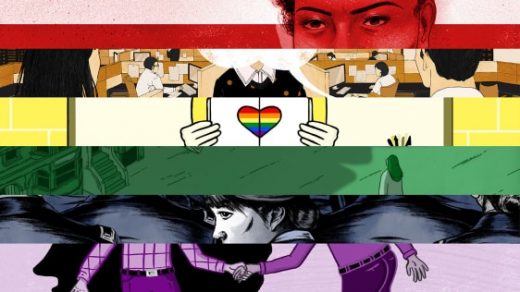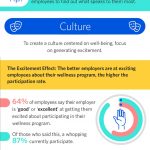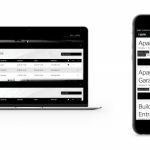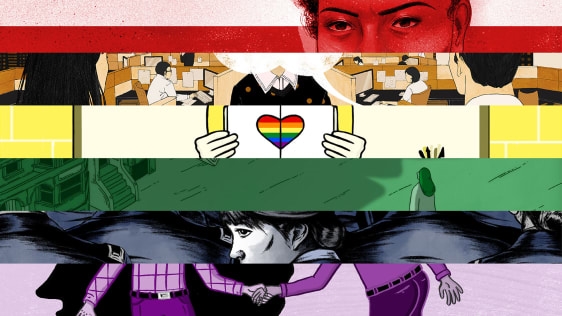What It’s Really Like To Be Out At Work In 2017
By the time I interviewed for my first professional internship, I was already out to my family and friends. But figuring out how to be out at work still wasn’t something I was prepared for.
During the interview, for a small lefty book publisher in New York, I ended up blurting out something about how being gay made me feel committed to social justice. It was true, but it felt like a cheap way to win points, and I regretted it even after getting the internship. Later that summer, riding the elevator up with an editor one Monday morning, I blushed red while describing the barbecue I’d gone to over the weekend “at one of my boyfriend’s friends’.”
I was hugely privileged to be a college-educated, young, white gay man getting my foot in the door with a liberal employer in a liberal industry in a liberal city. But even so, determining whom to come out to and how to do it was often a fraught, awkward, frustrating experience.
These are uncomfortable calculations that many queer people face at work–and for some, they’re perilous ones. The Justice Department rolled back protections for LGBTQ workers in July, and it remains legal to fire someone for being gay or transgender in 28 states. But others in the community have radically different workplace experiences, including the cover subject of Fast Company’s “Out at Work” package, screenwriter and actor Lena Waithe.
Waithe has leaned into the discomfort around coming out, both in her professional life and in her work for Netflix’s Master of None, the hit series that won her an Emmy this year. Waithe’s role on the show was originally written as a straight white friend and possible love interest for star Aziz Ansari. But after an in-person meeting where she and Ansari clicked, Waithe says entire episodes were rewritten and tailored to her character, a thinly veiled version of her true self. Read Waithe’s story, in which she says her aim is to “proudly make people uncomfortable when I walk into a room, because I’m going to change the energy of it.”
“Out at Work” explores the multitude of ways LGBTQ people are navigating their workplaces, confronting obstacles, finding refuge, and much else in between. In September Fast Company partnered with Nancy, a WNYC Studios podcast, on its an ambitious survey of LGBTQ people’s working lives. Over the course of eight weeks, nearly 3,000 responses poured in from all 50 states and over a dozen countries, from Canada and the U.K. to Saudi Arabia and Singapore. Participants’ identities and the stories they shared were wide-ranging, too: 52% of respondents identified themselves as “out” in their jobs, 35% as “somewhat out,” and 13% as “not out.” Spanning 20 industries from recent grads to those in retirement, and including people from many gender identities, races, and ethnicities, and geographic regions, the survey makes for a rich snapshot of the diversity of queer workplace experiences.
Those we heard from were often surprised by the consequences of their disclosures. Some met with outpourings of support, and others made heartbreaking sacrifices. In 2001, Donald Ham remembers feeling “like I was working for a company that liked me as a professional but didn’t seem to respect me as a gay man.” So when his partner was offered a job out of state, Ham took a gamble and threatened to quit over lack of domestic partner benefits. Weeks later, the company announced it would be rolling them out. Read his story about pioneering change without ever having planned to.
Others remove themselves from inimical environments. This spring, days after graduating from college in the Midwest, one young woman wrote her conservative Pakistani Muslim parents a coming-out letter, packed her bags, and moved with her girlfriend to San Francisco to start her first full-time job. She hasn’t spoken to them since. Read her story of getting acquainted with an unfamiliar workplace, city, and identity all at the same time.
Many queer people feel compelled to take their own initiative to make things better. Brian Rieper, a 5th-grade teacher in Toronto, went against a colleague’s advice and came out to his students this fall, which he says has created a more open, civically engaged classroom. But Nichole Williams, a former social worker in Tacoma, Washington, regrets telling her coworkers she’s bisexual, since it quickly turned their conversations standoffish. Her experience isn’t unusual; in a CareerBuilder/Harris Poll survey last spring, a majority of LGBTQ workers reported being bullied repeatedly at work, with two in five experiencing health issues as a result. Looking back, Williams says, “I had the young, millennial belief that this field would be okay with who I was.”
One active-duty service member we spoke to had already made up her mind to stay in the closet, after seeing Trump’s tweets announcing a ban on transgender troops last summer (which was blocked in court less than two weeks ago). “I’m not trans but I’m scared of what would happen if Don’t Ask, Don’t Tell got reinstated,” she told us. “I need my job more than I need to have a social life.” Read her story of how her superior officer advised her to hide who she is from her colleagues.
America’s current political climate makes being openly gay or transgender harder than it might’ve been even a year ago. According to the Movement Advancement project, an LGBTQ advocacy group, 46 so-called “religious exemption” bills were introduced across the country in the last legislative session alone. But while LGBTQ issues regularly make headlines in the Trump era, one has distilled America’s hopes and anxieties about gender and sexuality more than any other: access to bathrooms.
When the Mississippi cosmetics retailer where Malaysia Walker used to work shuttered its family restroom for renovations, she asked her manager what she should do. After a couple of weeks, Walker was instructed to use the men’s room, “due to the fact that I had not transitioned further,” she recalls. So for the next year, Walker says, “I had to act like I was cleaning the bathroom, making sure no one was in there” as male customers, coworkers, and construction workers came and went–an arrangement that never stopped feeling unsafe.
Walker had reason to feel threatened. Last January her friend Mesha Caldwell was killed, in one of the first murders of transgender people reported in the U.S. this year; there have been an additional 22 such victims since then, and like Walker and Caldwell, all but two were people of color. The next month, Walker left her 15-year career in retail for a job at the ACLU. When the offer came, she felt that it was Caldwell’s way of telling her to take action.
Now, perhaps more than at any other time in recent decades, it’s important to understand and celebrate what it means–and what it takes–to be out in the modern workplace. It’s been over a decade since my first, fumbling coming-out moment at work, but because each new professional encounter presents a fresh set of choices about what to share and how to share it, that process never stops. For some queer people, coming out at work is liberating; for others, it’s an infinitely riskier proposition.
“Out at Work” gathers the courageous stories of people navigating that uncertain terrain with every room they enter in the workplace–in many cases, changing the energy of them for the better.
Read The Full “Out At Work” Package:
Editor’s Letter: Our Workplaces Can Be A Laboratory For Change
Cover Story: Lena Waithe: “I’m Going To Proudly Make People Uncomfortable When I Walk Into A Room”
Fast Company , Read Full Story
(17)














